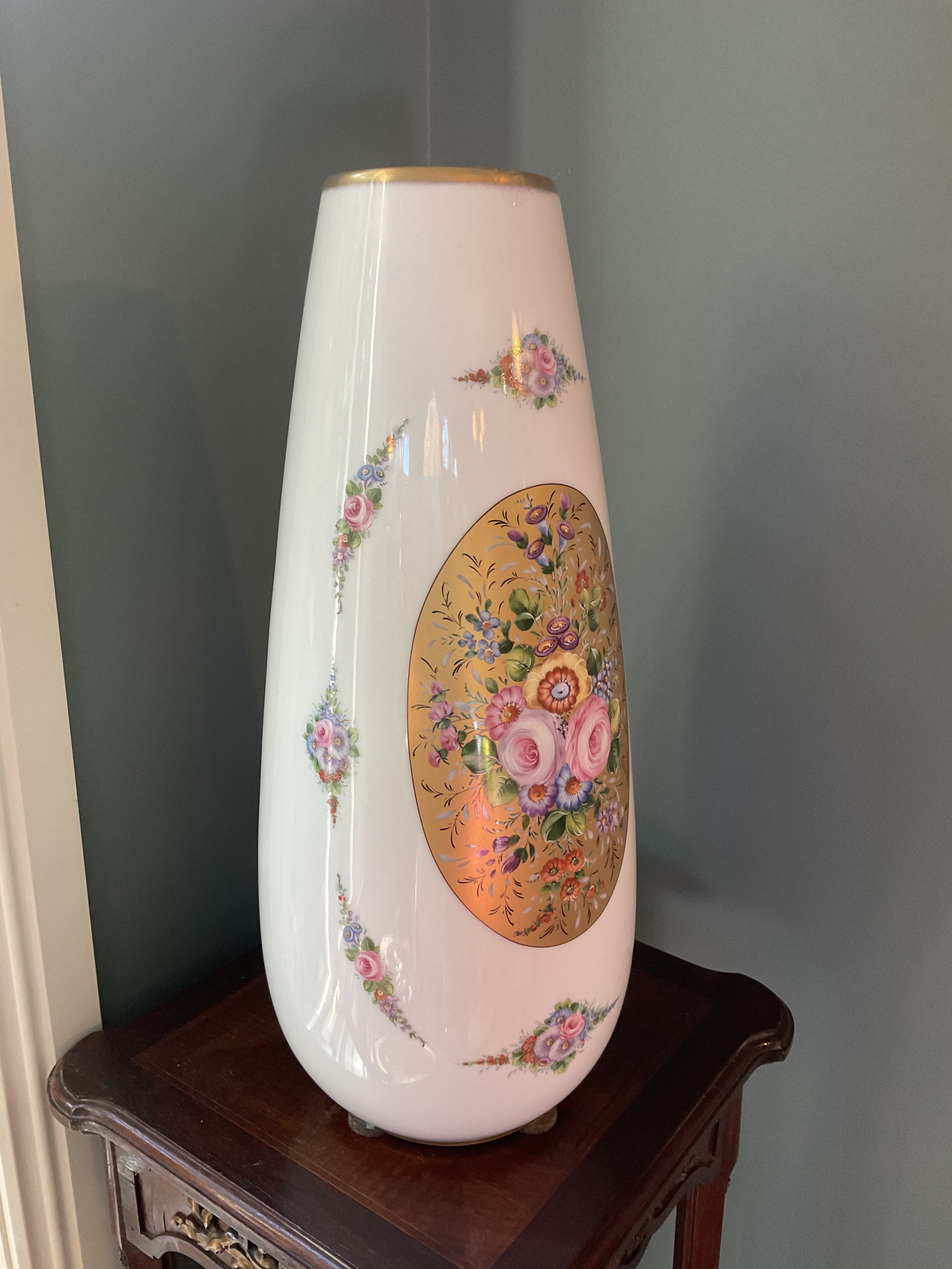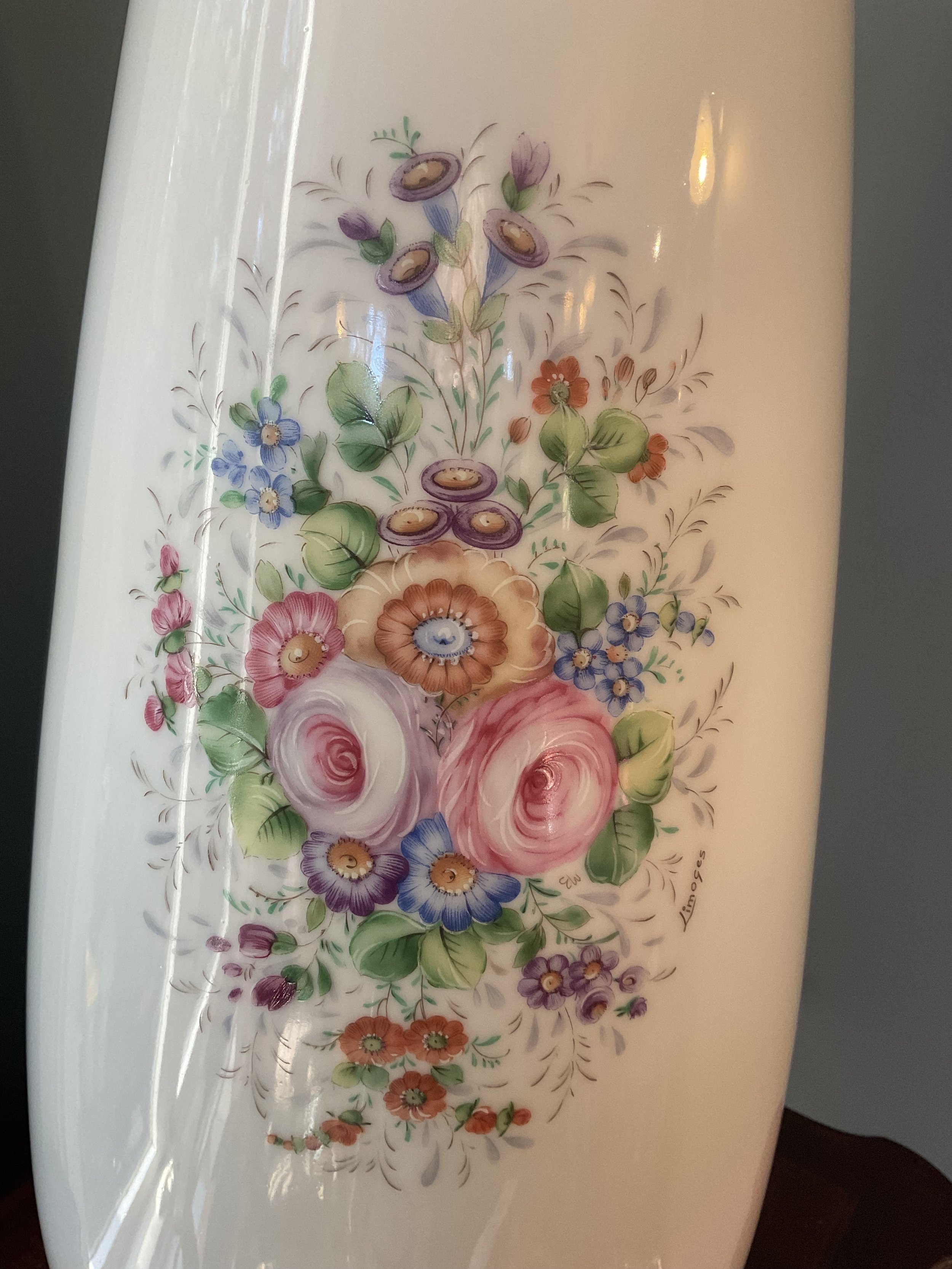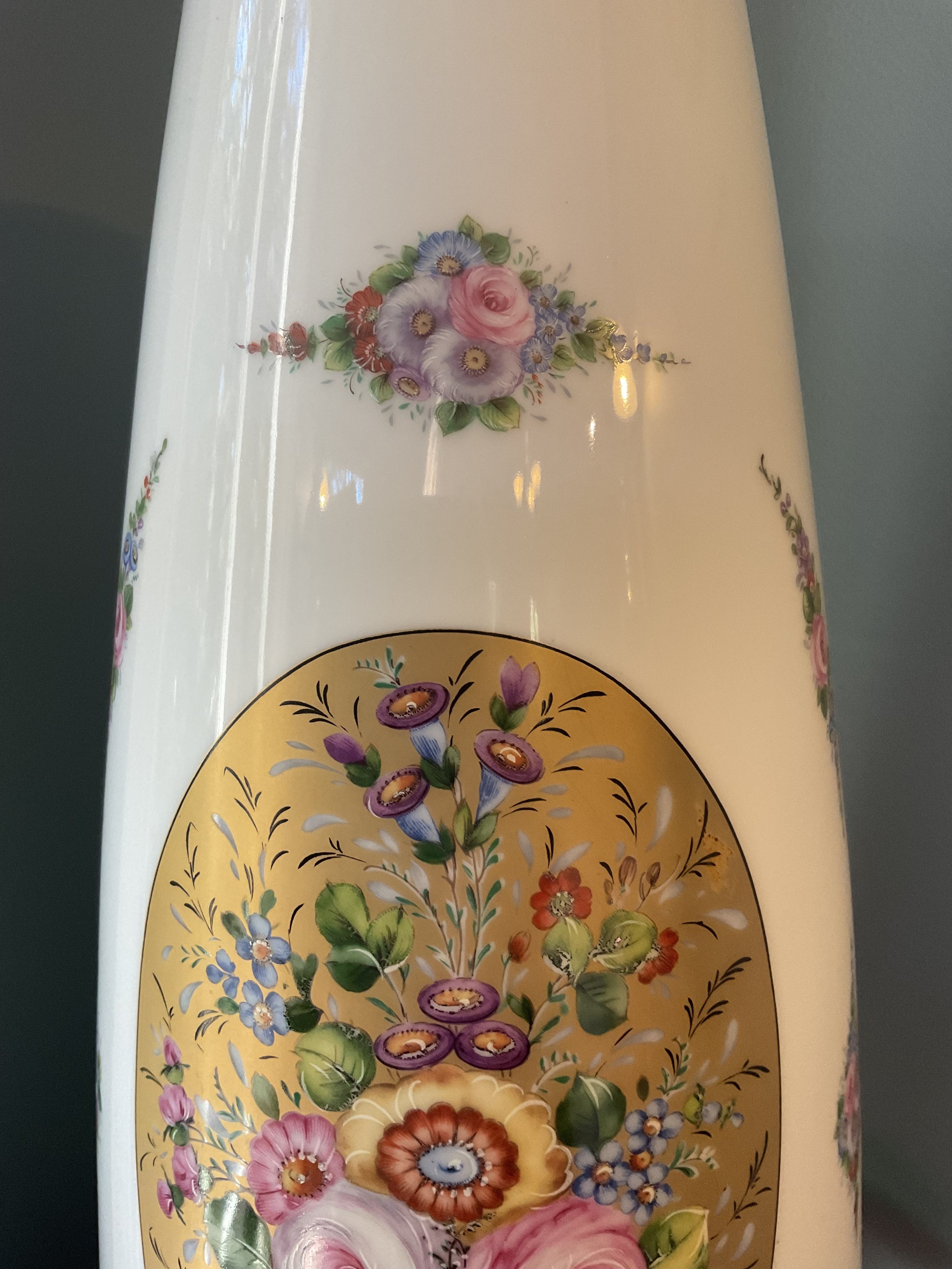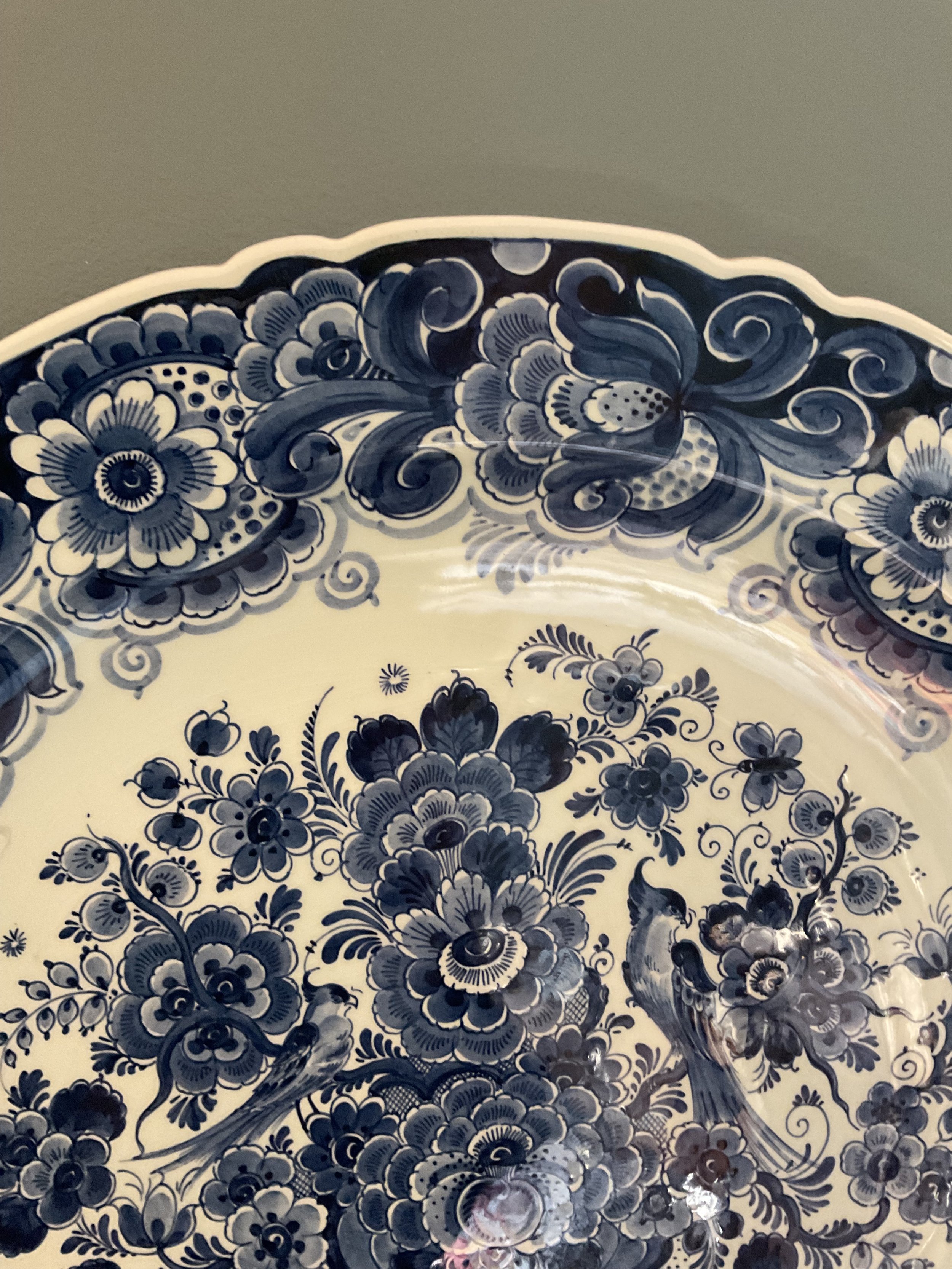 Image 1 of 8
Image 1 of 8

 Image 2 of 8
Image 2 of 8

 Image 3 of 8
Image 3 of 8

 Image 4 of 8
Image 4 of 8

 Image 5 of 8
Image 5 of 8

 Image 6 of 8
Image 6 of 8

 Image 7 of 8
Image 7 of 8

 Image 8 of 8
Image 8 of 8









French Pottery Studio Vase
At first glance, this could be mistaken for wooden vase. On closer inspection, it can be seen that it is indeed a pottery vase. It has obviosly been created by a skilled artisan. The vase has been decorated in an organic design reminescent of the Art Nouveau period. A pattern resembling wings is displayed around the neck of the vase. The centre is adorned with an intricate floral design. The glaze has been cleverly applied to give the impression of timber.
In the late 19th century, the ceramic industry underwent a radical transformation, heralding in a rebirth in ceramics which was new and modern. Pottery creations became viewed as true works of art. This was a reaction and push back to the excessive overuse of ornament. Simplicity was celebrated. The Art Nouveau style emphasised uniqueness and a return to the notion of craftmanship. Potters typically worked out of small-scale studios or an independently run branch of a larger company. They embraced the traditions of artisans, engaging in lots of experimentation and the pursual of lost techniques. Many of these artists were influenced by Asian ceramics, particularly Japanese stoneware which was showcased at the Exposition Universelle in Paris, 1878. At this time, artists were also influenced by European traditions such as salt glazed stoneware and Gothic sculptures. Some pioneers and revolutionary artists included Ernest Chaplet, Theodore Deck, Jean Carries and Auguste Delaherche.
This delightful vase stands 31 cms in height.
At first glance, this could be mistaken for wooden vase. On closer inspection, it can be seen that it is indeed a pottery vase. It has obviosly been created by a skilled artisan. The vase has been decorated in an organic design reminescent of the Art Nouveau period. A pattern resembling wings is displayed around the neck of the vase. The centre is adorned with an intricate floral design. The glaze has been cleverly applied to give the impression of timber.
In the late 19th century, the ceramic industry underwent a radical transformation, heralding in a rebirth in ceramics which was new and modern. Pottery creations became viewed as true works of art. This was a reaction and push back to the excessive overuse of ornament. Simplicity was celebrated. The Art Nouveau style emphasised uniqueness and a return to the notion of craftmanship. Potters typically worked out of small-scale studios or an independently run branch of a larger company. They embraced the traditions of artisans, engaging in lots of experimentation and the pursual of lost techniques. Many of these artists were influenced by Asian ceramics, particularly Japanese stoneware which was showcased at the Exposition Universelle in Paris, 1878. At this time, artists were also influenced by European traditions such as salt glazed stoneware and Gothic sculptures. Some pioneers and revolutionary artists included Ernest Chaplet, Theodore Deck, Jean Carries and Auguste Delaherche.
This delightful vase stands 31 cms in height.
At first glance, this could be mistaken for wooden vase. On closer inspection, it can be seen that it is indeed a pottery vase. It has obviosly been created by a skilled artisan. The vase has been decorated in an organic design reminescent of the Art Nouveau period. A pattern resembling wings is displayed around the neck of the vase. The centre is adorned with an intricate floral design. The glaze has been cleverly applied to give the impression of timber.
In the late 19th century, the ceramic industry underwent a radical transformation, heralding in a rebirth in ceramics which was new and modern. Pottery creations became viewed as true works of art. This was a reaction and push back to the excessive overuse of ornament. Simplicity was celebrated. The Art Nouveau style emphasised uniqueness and a return to the notion of craftmanship. Potters typically worked out of small-scale studios or an independently run branch of a larger company. They embraced the traditions of artisans, engaging in lots of experimentation and the pursual of lost techniques. Many of these artists were influenced by Asian ceramics, particularly Japanese stoneware which was showcased at the Exposition Universelle in Paris, 1878. At this time, artists were also influenced by European traditions such as salt glazed stoneware and Gothic sculptures. Some pioneers and revolutionary artists included Ernest Chaplet, Theodore Deck, Jean Carries and Auguste Delaherche.
This delightful vase stands 31 cms in height.
Not suitable for delivery via Australia Post. Collection by appointment. Please make contact if you would like to arrange another type of delivery. Free delivery to some Melbourne metropolitan areas can be arranged.

































